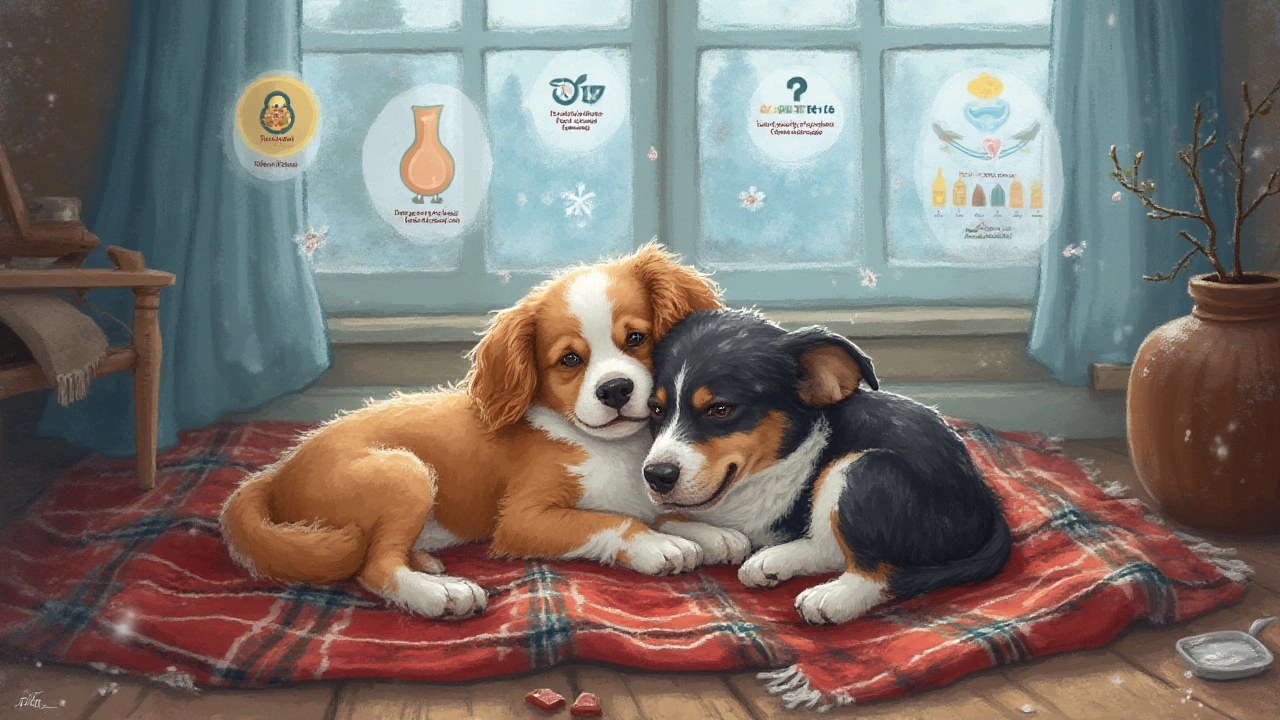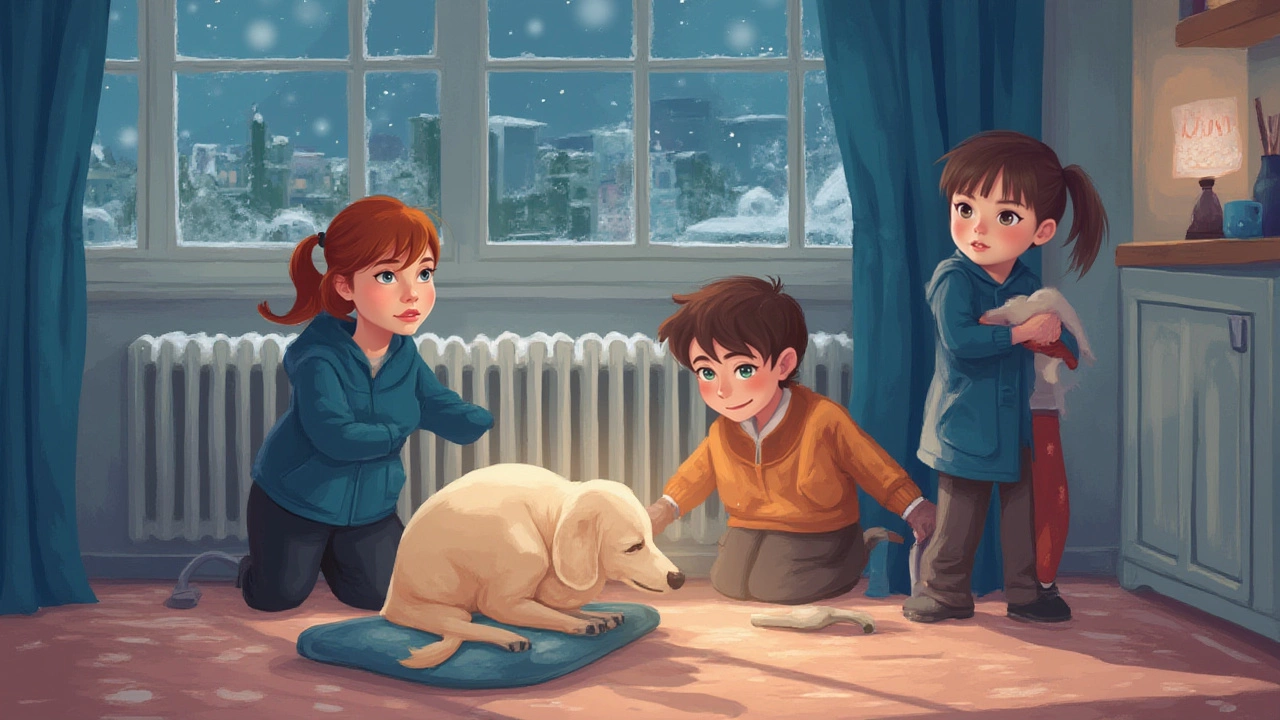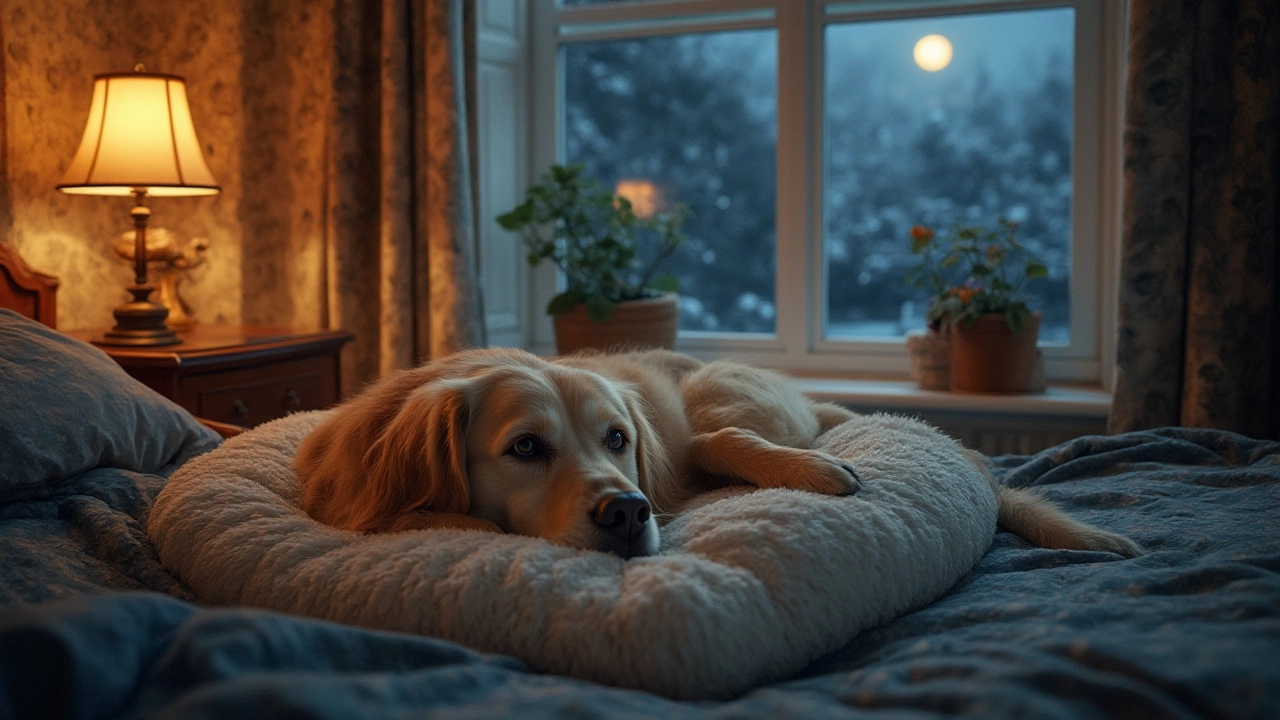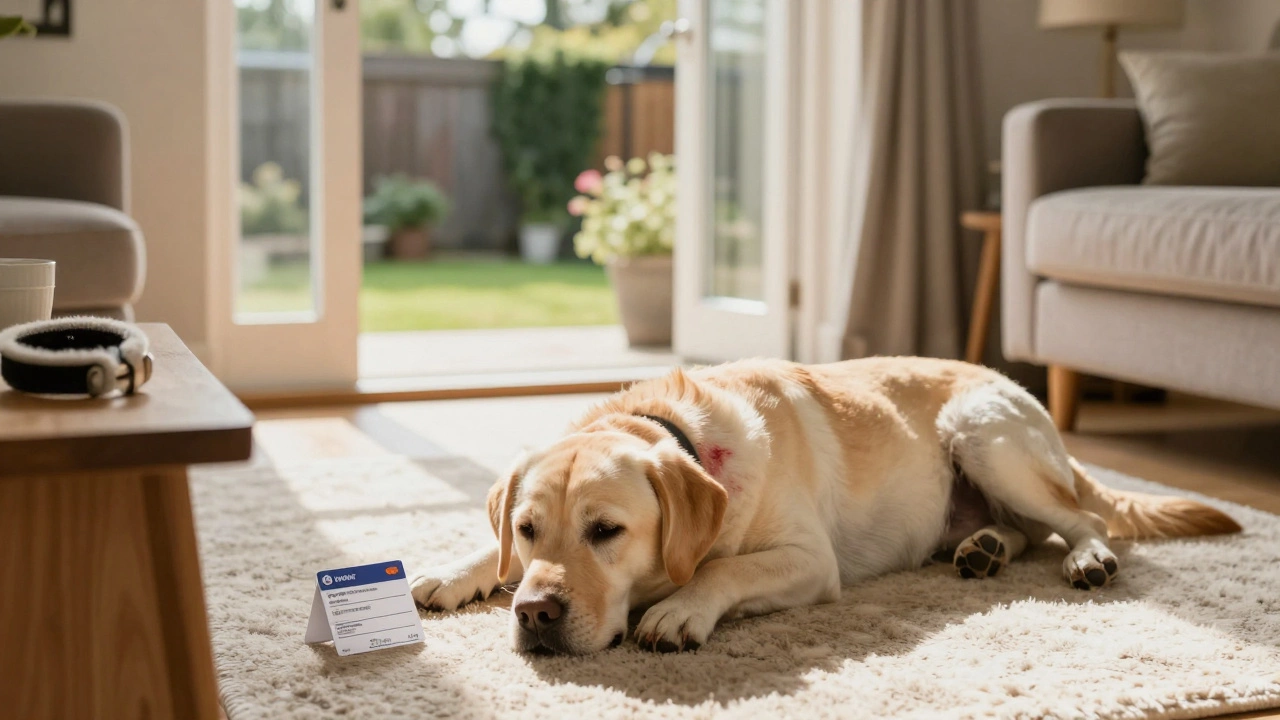Ever noticed the way dogs seek out cool tile floors in the summer or burrow into blankets in winter? They’re not just being quirky—these behaviors tell us a lot about how dogs feel about room temperature, especially when it comes to sleeping. The debate over whether our furry pals actually like sleeping in cold rooms can stir up some heated opinions at the dog park. But this isn’t just about personal preference—science and history have plenty to say about it.
Understanding Dogs’ Natural Temperature Preferences
Dogs are a diverse bunch, not just in their looks but in how their bodies deal with hot and cold. Those thick-coated Huskies were built for Siberian chills, while the thin-coated Greyhound shivers at a mild breeze. Canines regulate their body temperature through panting, paw pads, and, unlike us, only a tiny bit through sweat. Most dogs start to feel uncomfortable when the indoor temperature dips below 15°C (about 59°F), especially if they don’t have thick fur keeping them warm. But let’s not forget breeds with dense undercoats—they won’t mind the cold as much and might even prefer it.
In fact, dogs’ comfort zones are usually between 18°C and 22°C (that’s 64°F to 72°F). Yet, when the house gets chilly, you’ll often see dogs curl up tightly (a trick called “curled sleeping” to conserve heat) or snuggle into bedding or their owner’s lap. If your dog flops down on a cold floor, it might just mean they’re too warm, not that they love the cold environment itself. Their thermoregulatory instincts are sharper than ours. They listen to their bodies in ways we sometimes overlook—or overcomplicate with dog sweaters and heated beds.
Puppies and seniors are especially sensitive to room temperature. A study from the American Kennel Club found that puppies under 8 weeks can actually struggle to regulate their own warmth, making cold rooms a real risk. On the flip side, northern breeds like Malamutes or Saint Bernards have been known to sleep outside in snow. The key takeaway is: one size doesn’t fit all when it comes to comfort for man’s best friend.
The Science Behind Canine Sleep and Temperature
Sleep isn’t just about curling up and catching Z’s. Dogs have sleep cycles just like us, complete with rapid eye movement (REM) where dreams and memory-making happen. Room temperature can play a big role in how restful their sleep is. Veterinarians say that if it’s too cold, your dog’s body will use more energy trying to keep warm, interrupting their deep sleep stages. That’s why you might see restless shifting or hear your dog whining in the middle of the night when the room cools down too much.
A 2023 Cornell University study measured sleep quality in dogs across different thermal environments. It found that dogs in cooler rooms (10–15°C or 50–59°F) woke up more often and moved around during the night, compared to those sleeping at around 20°C (68°F). So they’re not sleeping better when it’s chilly—they’re actually interrupted and less rested. Interestingly, the same dogs, when given a chance to choose, almost always picked sleeping areas with bedding or closer to heat sources.
Thermoregulation uses up calories, and when a dog is burning extra energy just to stay warm, it can mean increased food needs—important to know if you keep your house on the cooler side at night. According to the National Research Council, small dogs and those with little body fat lose heat the quickest, making them more likely to wake up at night and seek warmth. And this effect gets even sharper as dogs age or if their health starts to decline.

How Dogs Communicate Their Comfort (Or Discomfort)
Dogs are masters at telling us how they’re feeling if we know what to watch for. Shivering, whining, refusing to settle—these are clear signs your pooch is too cold. You might also notice your dog burrowing under blankets, seeking out furniture, or even trying to climb into bed with you when the temperature drops. Some will curl up in that famous donut shape, tails over their noses, to trap heat. If your dog stretches out long and wide, they’re trying to cool off.
Dogs don’t fake it—they’ll let you know if a room is uncomfortably cold. Watch for cooled extremities, stiff joints (especially in older dogs), and reluctance to get out of bed in the morning. On the other hand, a pup who sprawls belly-up on a tile floor or shoves blankets aside is likely feeling too warm. Listening to these cues is way more effective than relying on a fancy thermostat or stylish dog pajamas.
The way a dog sleeps says a lot, too. Some will adjust their preferred spot with the seasons, from sunbeams to shadows. Want a quick tip? Toss a couple of bedding options in warm and cooler places. Where your dog ends up sleeping will settle the debate faster than a stack of research papers ever could.
The Impact of Room Temperature on Different Dog Breeds
If you’re sharing your bed with a Labrador or a Chihuahua, you’re going to need different strategies to keep everyone happy. Short-coated dogs (like Whippets, Frenchies, and Dalmatians) struggle way more in cold rooms. Their body mass isn’t enough insulation, so what seems like a nice chill room to you might feel like winter to them. Expect these breeds to cuddle into blankets, or even seek out your own body warmth at night.
Larger dogs, especially those with double coats—think Golden Retrievers or German Shepherds—can handle a cooler room. But even they have limits. If a cold snap hits and the house temperature drops below 12°C (54°F), even the fluffiest dogs can get uncomfortable over time. That’s when you might see them fuss with their bedding or refuse to settle in their usual spots.
Certain medical conditions, like arthritis or hypothyroidism, make cold rooms even tougher for some breeds. For a senior Dachshund dealing with joint pain, a cold floor turns sleep into a nightly challenge. Vets recommend orthopedic or heated beds for these pups. The same goes for hairless breeds, who have zero insulation and ultra-sensitive skin. Even a mild chill gives them the shivers.
If you’re in a climate with big seasonal swings or don’t heat every room evenly, it’s smart to adapt your dog’s sleeping setup with the weather. Double up on bedding, add an old hoodie to their bed, or just move their crate out of drafts. A dog who sleeps soundly is going to be healthier, less anxious, and way more fun during the day—nobody likes a grouchy, sleep-deprived canine.

Tips for the Perfect Dog Sleeping Setup (Whether Cold or Warm)
If you want your dog to sleep deeply and happily, temperature is just one piece of the puzzle. Think about where drafts hit, how much bedding you’re providing, and even what’s underfoot. Tile or hardwood stays colder year-round—toss down a blanket or thick dog bed to soften the chill. For super cold regions or sensitive dogs, consider a pet-safe heating pad (just make sure it can’t be chewed or tangled).
In summer, cooling mats come to the rescue. Dogs pant to shed heat, but in a stuffy room, that only goes so far. Offer a fan or crack a window (with secure screens) to keep the air moving. Most pups love having the choice: a cozy blanket here, a cool spot over there. Let them decide where they want to snooze and their natural instincts will do the rest.
Regularly check on your dog’s comfort through the seasons. If you notice a shift in where or how your dog sleeps, it could signal a temperature issue (or sometimes even a hint of illness). Keep food and water away from direct drafts or heat sources. Dogs appreciate a little climate control just as much as humans do—even if their way of showing it is flopping dramatically onto the rug or snuggling into a laundry pile.
- Provide diverse bedding: One fluffy, one less-so. Let your dog choose.
- If using crates, never place directly under a window or by a heater/AC vent.
- For breeds like Huskies, drop an ice pack (in a towel) under their bedding on hot days—watch them gravitate toward it.
- Monitor older or arthritic dogs closely; they lose heat faster and suffer more aches in cold rooms.
- When in doubt, check your dog’s ears and paws—if they’re cold to the touch, it might be time to warm things up.
Check out this quick breakdown of comfort needs by breed type:
| Breed Type | Ideal Sleeping Temperature (°C) | Risk in Cold Room |
|---|---|---|
| Short-coated (e.g. Greyhound) | 18–22 | High risk of chill, restless sleep |
| Double-coated (e.g. Husky) | 10–18 | Low risk; may prefer cooler environment |
| Toy breeds (e.g. Chihuahua) | 20–24 | Very high—needs extra warmth, blankets |
| Senior/Arthritic | 21–24 | Chill increases pain, risk of illness |
The bottom line? Dogs may seek out cold spots during the day—especially after exercise or in hot weather—but most don’t enjoy sleeping in cold rooms overnight. Watch your pet, keep their sleeping area comfortable and, when in doubt, dogs sleeping habits are the real answer. They’ll show you what they like—whether that means stealing your blanket or hogging the coolest corner in the house.



